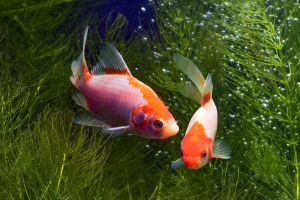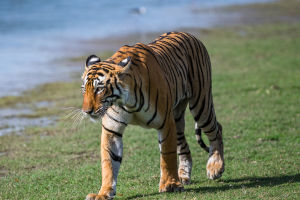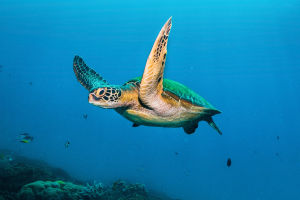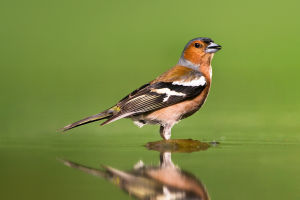
Koi fish are more than just colorful pond decorations.
These stunning creatures are complex and require specific care to thrive in a backyard environment.
If you’re a Koi owner or considering becoming one, it’s essential to know how to keep your fish healthy and vibrant. Below are some critical tips that go beyond general advice, offering detailed and actionable steps for excellent Koi care!
1. Optimal Pond Depth for Koi Survival
Koi are large, active fish that require space to grow and maintain their health. One of the most crucial aspects of their care is ensuring that your pond is deep enough. Koi require a pond with a minimum depth of 3 feet. This depth provides stability in temperature regulation, which is essential as shallow ponds can experience rapid changes in water temperature, leading to stress. For larger Koi or colder climates, ponds should ideally be 4 to 6 feet deep to support their long-term well-being.
2. Maintaining Crystal Clear Water Quality
Water quality is the cornerstone of Koi health. But it’s not just about looking clean, it’s about keeping the water chemistry balanced. Ammonia, nitrites, and nitrates need to be closely monitored. Koi produce a significant amount of waste, which leads to spikes in these substances. Using a biological filtration system is key, as it helps break down harmful toxins.
Ensure that you check water quality every few days, especially during warmer months when the biological filter works overtime. Test kits for ammonia, nitrites, and pH are available and affordable, and they’re essential to keeping the pond water in an ideal range: a pH of 7.0 to 8.4 is optimal for Koi.
3. The Right Food for Koi’s Growth and Color
Feeding Koi is an art that requires understanding their nutritional needs. Koi benefit from high-protein, high-quality food rich in wheat germ, spirulina, and fish meal. These ingredients promote healthy growth and vibrant colors, especially if you want your Koi to have that radiant orange, red, or yellow hue.
It’s important to feed your Koi in moderation—typically twice a day, during the warmer months. Overfeeding can lead to uneaten food sinking to the bottom, raising ammonia levels, and stressing the fish. In winter, when the water temperature drops below 50°F (10°C), Koi enter a semi-dormant state and require less food. In fact, they can fast for months without harm.
4. Temperature Control: Essential for Koi Health
Koi fish are cold-blooded, so water temperature directly impacts their metabolism. The ideal water temperature range is between 65°F and 75°F (18°C to 24°C). If the water gets too warm, especially during hot summer months, it can cause Koi to become lethargic and even make them more susceptible to diseases.
5. Regular Health Checkups: Spotting Problems Early
Routine health checks are vital to prevent disease outbreaks. Koi can show symptoms of illness by changing their behavior. Look for signs like unusual swimming patterns, scratching against surfaces, or clamped fins. These could indicate a parasite or infection. Common Koi health problems include Ich (white spot disease), Koi herpesvirus (KHV), and bacterial infections. In many cases, early detection leads to successful treatment, but a lack of attention can lead to severe outbreaks.
6. Filtration and Oxygenation Systems: The Lifeline
A well-functioning filtration system is non-negotiable for Koi care. Mechanical filters remove visible debris, while biological filters house beneficial bacteria that convert harmful substances like ammonia into safer compounds. However, the filtration system isn’t enough on its own.
Proper oxygenation is equally essential. Koi thrive in well-oxygenated water, which helps support their metabolism and overall health. Adding an aeration system or fountain can help keep the water circulating and oxygenated, especially during the warmer months when oxygen levels tend to decrease.
7. Seasonal Considerations for Koi
Their metabolism slows, and they spend most of their time near the pond’s bottom. Reducing feeding to once every 1-2 weeks or stopping altogether is normal. For cold-climate areas, ensure that your pond has a pond heater or de-icer to prevent the water from freezing entirely, which can block oxygen exchange.
8. Creating a Stress-Free Environment
Common stressors include overcrowding, sudden changes in water temperature, or the introduction of aggressive species into the same pond. It’s essential to maintain a balance in the pond, ensuring that Koi have adequate space. The general rule is at least 1,000 gallons of water per 3 Koi.
Caring for Koi is a rewarding, long-term commitment that requires careful attention to water quality, feeding habits, temperature, and overall pond environment. Following these tips, you can ensure that your Koi live long, healthy lives while contributing to the beauty of your pond. With regular maintenance, monitoring, and thoughtful care, your Koi will remain a vibrant, captivating feature in your outdoor space for years to come!
Keeping Koi is EASY! 3 Tips BEFORE You Get Started
Video by Tazawa Tanks


